Text

That might not be the best idea... But... I understand. I think.
Let us stare into the sun my friend!

I'm going to spend the morning staring directly into the sun
Just because I can
Anyone care to join me?
#Probably a good thing I'm not a prismatic#I've made worse life choices#Probably#It's kind of hard to concentrate while staring at a giant ball of fire
92 notes
·
View notes
Text
I love her outfit!


A horseshoe crab being a home to other sea creatures!
31K notes
·
View notes
Text
When did @besmirched learn serpentine form?
Jamil as a snake



19 notes
·
View notes
Text

Here is this adorable thing. Still one of my favorite paintings. I need to get it framed.
11 notes
·
View notes
Text
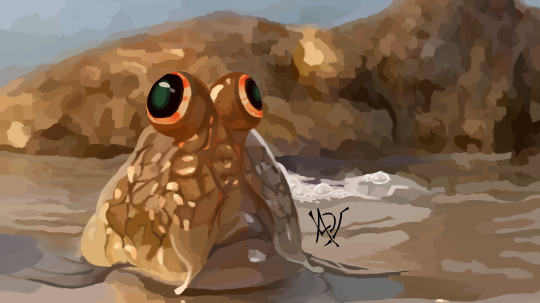
lil mudskipper painting :]
referenced from a frame from this video
2K notes
·
View notes
Text
( '2') Ink familiar.
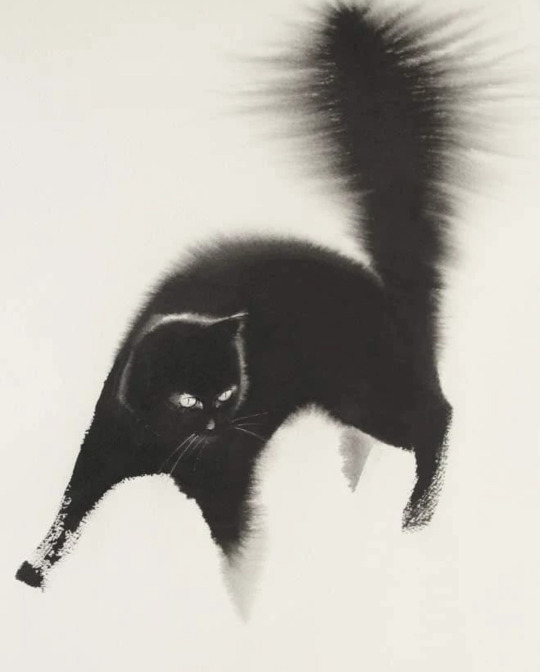
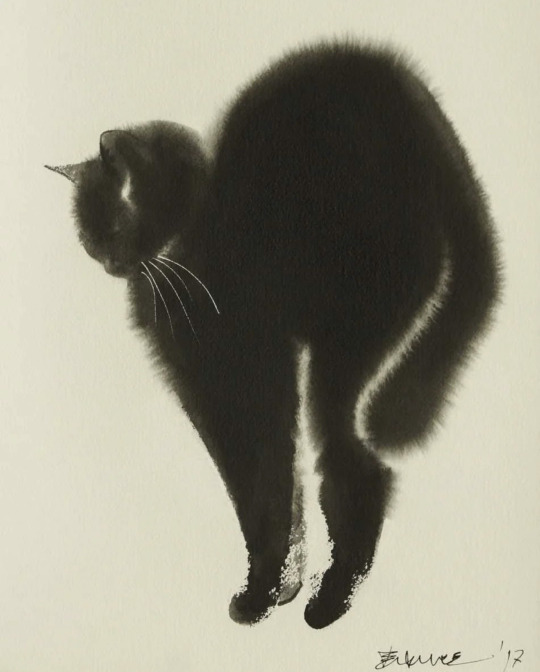

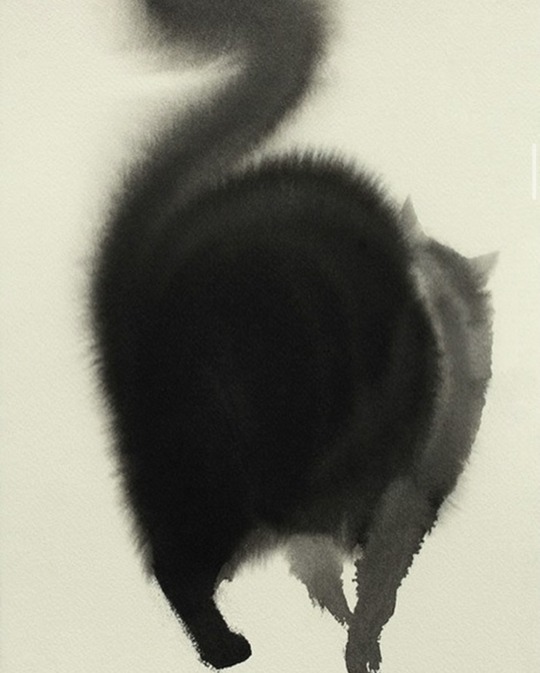
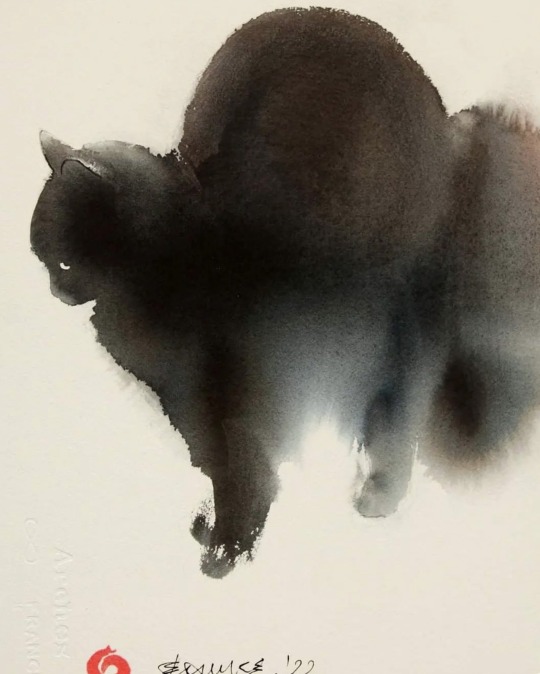

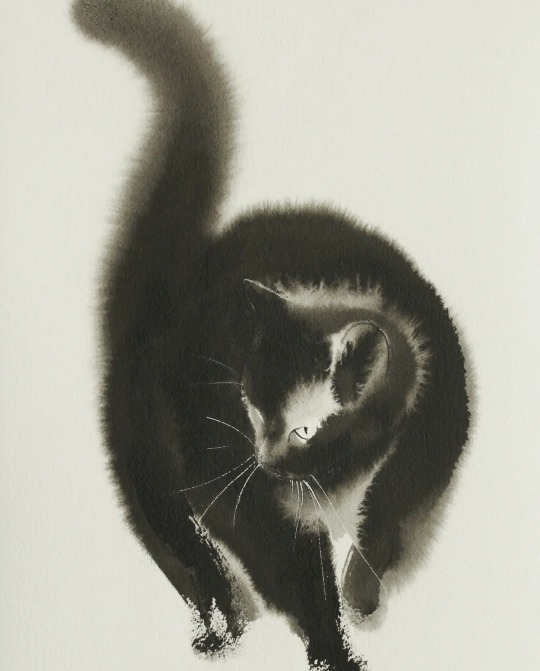

Ink Artwork by Endre Penovác
50K notes
·
View notes
Text
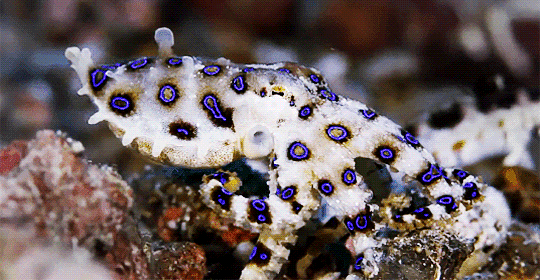

Blue-ringed octopus; small but highly venomous (x)
416 notes
·
View notes
Text
Кокосовый осьминог принадлежащий к роду Amphioctopus marginatus.The coconut octopus belongs to the genus Amphioctopus marginatus.
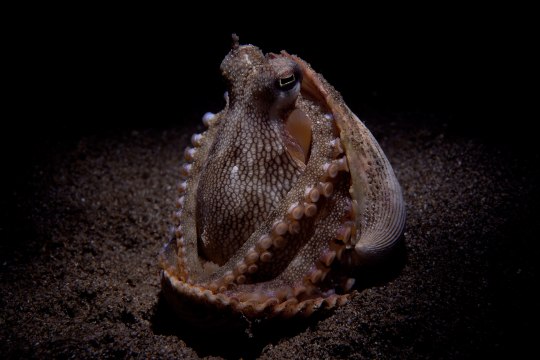

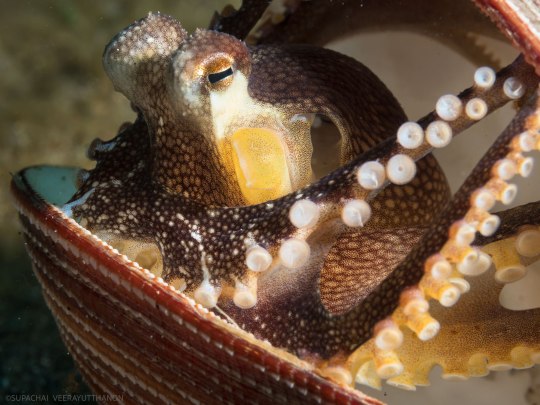

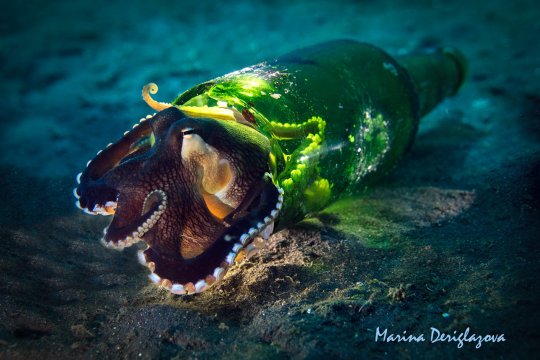
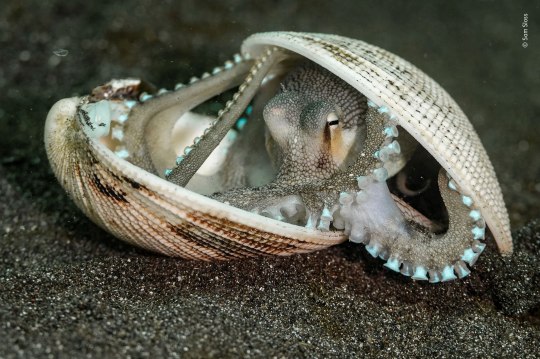


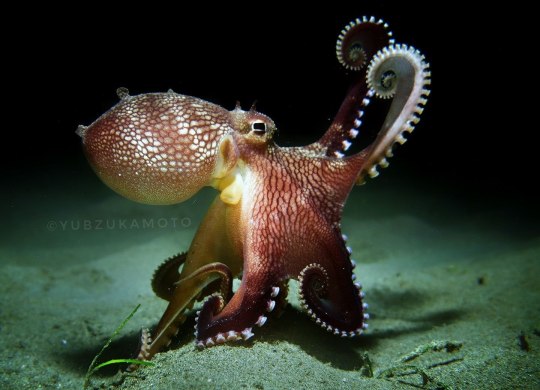
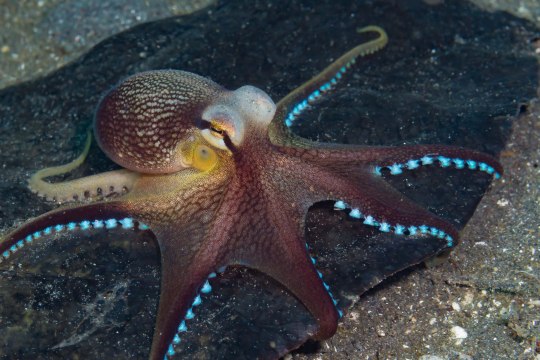

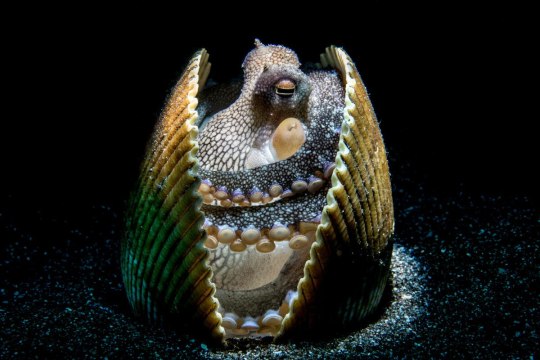
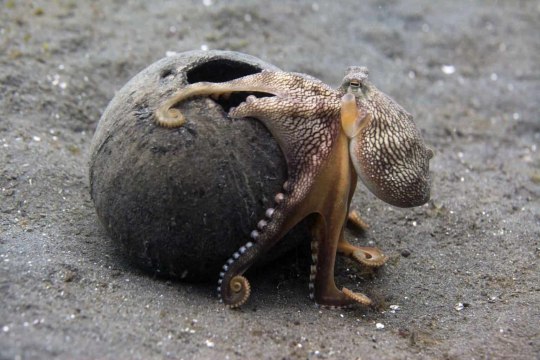


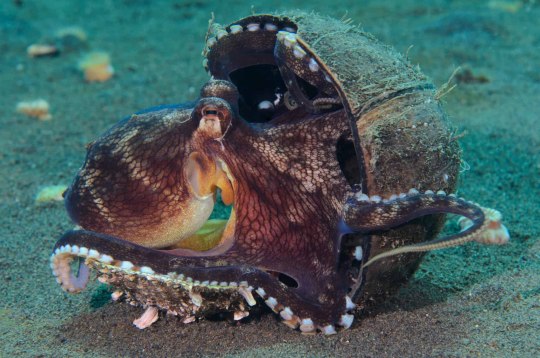
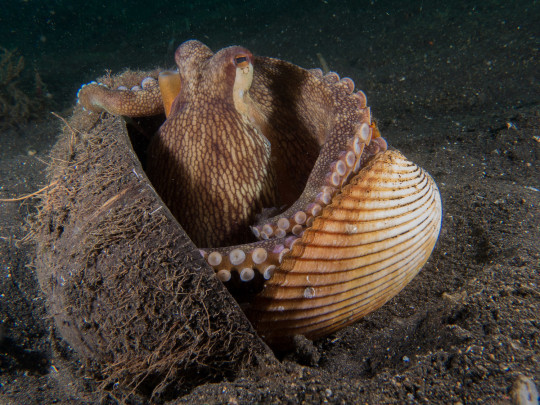
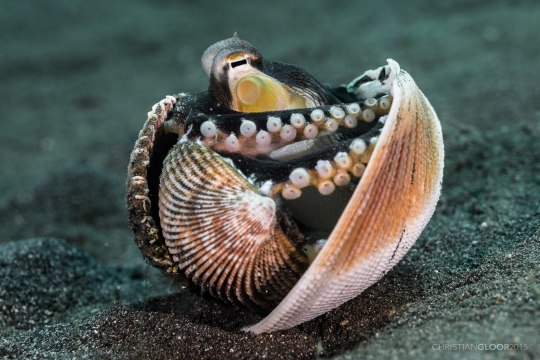

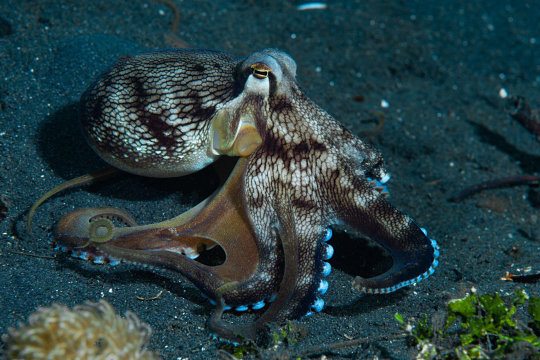



Кокосовые осьминоги — это бентосные (обитающие на дне) животные из семейства обыкновенных осьминогов (Octopodidae). Они обитают в водах Индо-Тихоокеанской области на мелководье и на глубинах до 190 метров.Основная часть осьминога (туловище), как правило, около 8 см, и с щупальцами, около 15 сантиметров в длину. Рисунок на их теле напоминает прожилки или вены, откуда пошло второе английское название осьминог с жилками. Руки обычно окрашены темнее и контрастируют с ярко-белыми присосками, которые способными отражать свет, из-за чего ошибочно кажутся флуоресцирующими.
Кокосовые осьминоги обычно охотятся на креветок, крабов, моллюсков и проявляют необычное поведение, такое как двуногая ходьба и использование скорлупы кокосового ореха или ракушки для жилья. Иногда кокосовые осьминоги прячутся в пластиковых стаканчиках, стеклянных и жестяных бутылках, мыльницах и другом мусоре. А иногда — в раковинах брюхоногих моллюсков. Кокосовый осьминог умеет менять свой окрас в зависимости от настроения. Это происходит благодаря множеству красящих пигментов в организме. Под влиянием импульсов, исходящих от нервной системы, в обычном состоянии осьминог имеет коричневатый оттенок, в злом – красный, а когда он испуган – белый.
Coconut octopuses are benthic (bottom-dwelling) animals from the family of common octopuses (Octopodidae). They live in the waters of the Indo-Pacific region in shallow waters and at depths of up to 190 meters. The main part of the octopus (torso) is usually about 8 cm, and with tentacles, about 15 centimeters in length. The pattern on their body resembles veins or veins, hence the second English name veined octopus. The arms are usually darker colored and contrast with the bright white suckers, which are capable of reflecting light, causing them to mistakenly appear to be fluorescent. Coconut octopuses typically hunt shrimp, crabs, shellfish, and exhibit unusual behaviors such as bipedal walking and using coconut shells or shells for shelter. Sometimes coconut octopuses hide in plastic cups, glass and tin bottles, soap dishes and other garbage. And sometimes in the shells of gastropods. The coconut octopus can change its color depending on its mood. This occurs due to the many coloring pigments in the body. Under the influence of impulses emanating from the nervous system, in its normal state the octopus has a brownish tint, when angry it is red, and when it is scared it is white.
Источник: https://moreprodukt.info/kalmary/kokosovyy-osminog,//pikabu.ru/story/kokosovyiy_osminog_nauchilsya_zhit_vnutri_palmovyikh_orekhov_bezuprechnaya_zashchita_i_vnezapnoe_napadenie_8459109, /alexkolos.livejournal.com/76110.html,/moreprodukt.info/kalmary/kokosovyy-osminog.
142 notes
·
View notes
Text
When you can swim but perfect to waddle around for funsies

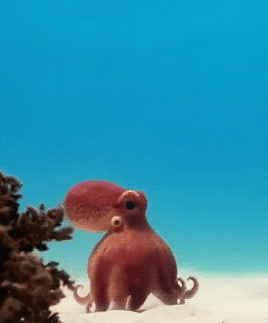
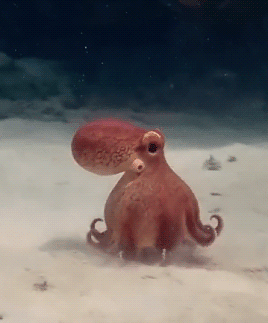

Cutie-pie of the sea (x)
*Update: this is not a real octopus but a spy bot for research. In a BBC vid(here), the spy bot helps an octopus to protect itself from sharks.
102K notes
·
View notes
Text
Incredible footage of a Octopus imitating a moray eel | source
9K notes
·
View notes
Text
Just a little guy engaging in the Octopus' natural behavior of making friends.
hello 🐙
83K notes
·
View notes
Photo
When you're sleeping then remember you left the oven on. Which is really impressive for a guy who lives underwater!

THIS OCTOPUS IS HAVING A NIGHTMARE, SCIENTISTS BELIEVE.
Sleep is a fundamental biological function present in all vertebrates and most invertebrates. Octopuses are really complex animals, displaying active and inactive sleep states similar to those of vertebrates. In particular, octopuses have active sleep states during which they display sequences of camouflage patterns, while remaining relatively quiet and unresponsive to external stimuli. Some scientists have speculated that these states could be analogous to dreaming in mammals.
Now, researchers have recorder what is believing an octopuses having nightmare. During a month, researchers recorded a male Brazilian reef octopus (Octopus insularis), and they detected four brief episodes were identified during which the octopus abruptly emerged from sleep, detached itself from its sleep position, and engaged in antipredator behaviors, despite no predator was present. The longest of these episodes resembled the species-typical response to a predatory attack, suggesting that the animal may have been responding to a negative episodic memory while sleeping.
However, these are just conjectures, as it is hard to be sure, according to scientists, who claim that more studies are needed to ensure that they really are nightmares.
Gif from video: Eric Ramos et al
Reference: Ramos et al., 2023. Abnormal behavioral episodes associated with sleep and quiescence in Octopus insularis: Possible nightmares in a cephalopod?. bioRxiv.
video can be seen here
5K notes
·
View notes
Video
#NSFW#Glad to see Bess' kind are keeping themselves busy still#Before he inspired bloodlust#Now its just lust I guess?
223K notes
·
View notes
Text

#that's cursive#he's in the middle of saying “eee!”#Either that or he's lost#Sir#Are you lost?#No?#He says no he's just having a good time
79K notes
·
View notes
Text
( o2o) One of the great things about living in the ocean is you can just reach up and punch your upstairs neighbors for being too annoying!
#octopus#punching fish#lol#they are so annoyed those fish don't respect their boundaries#“BACK OFF!”
2K notes
·
View notes
